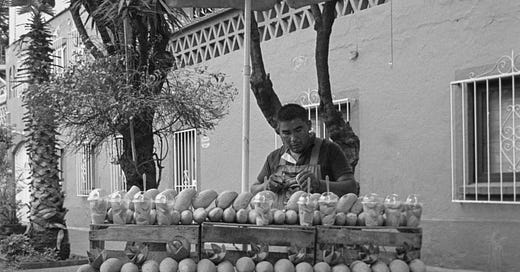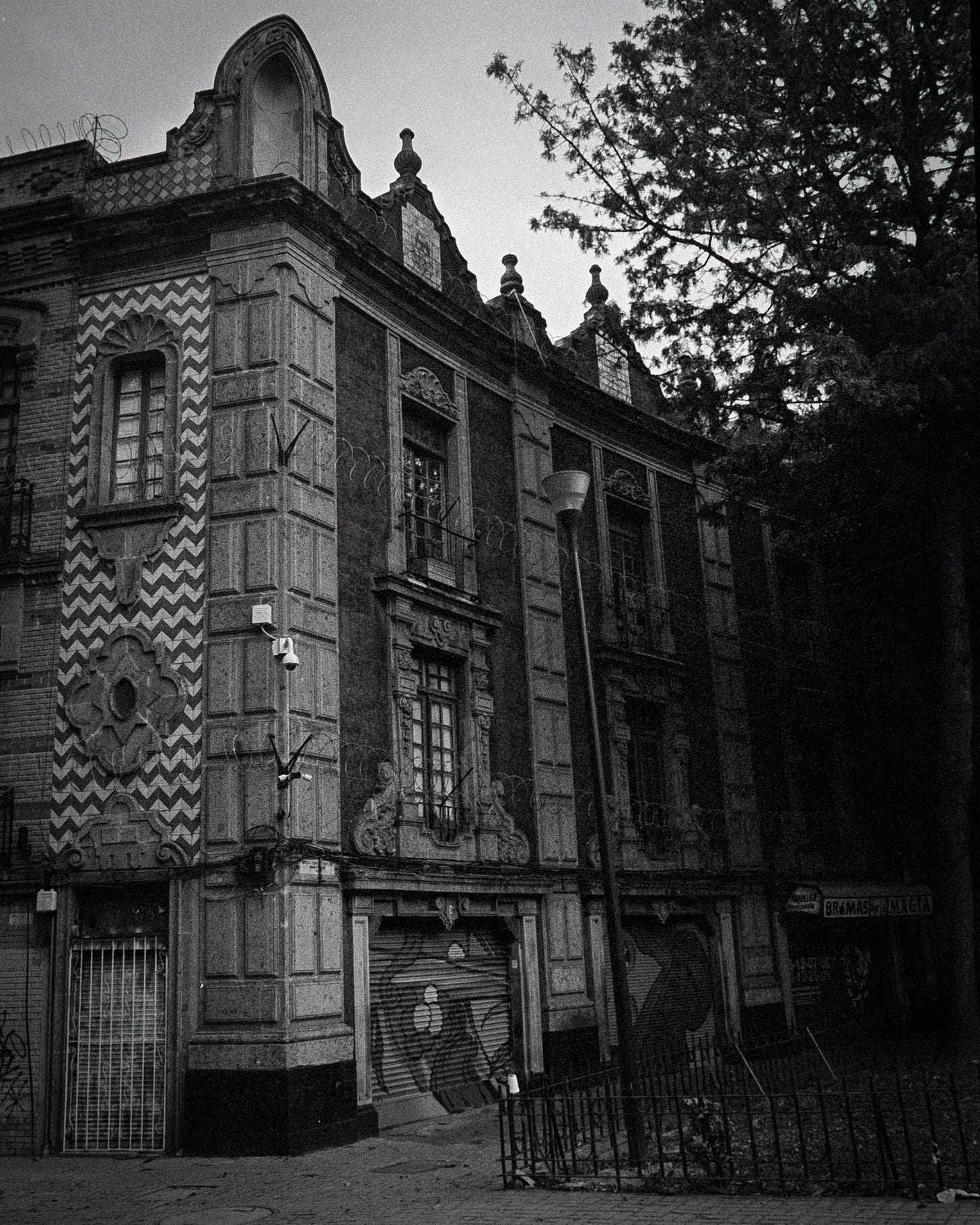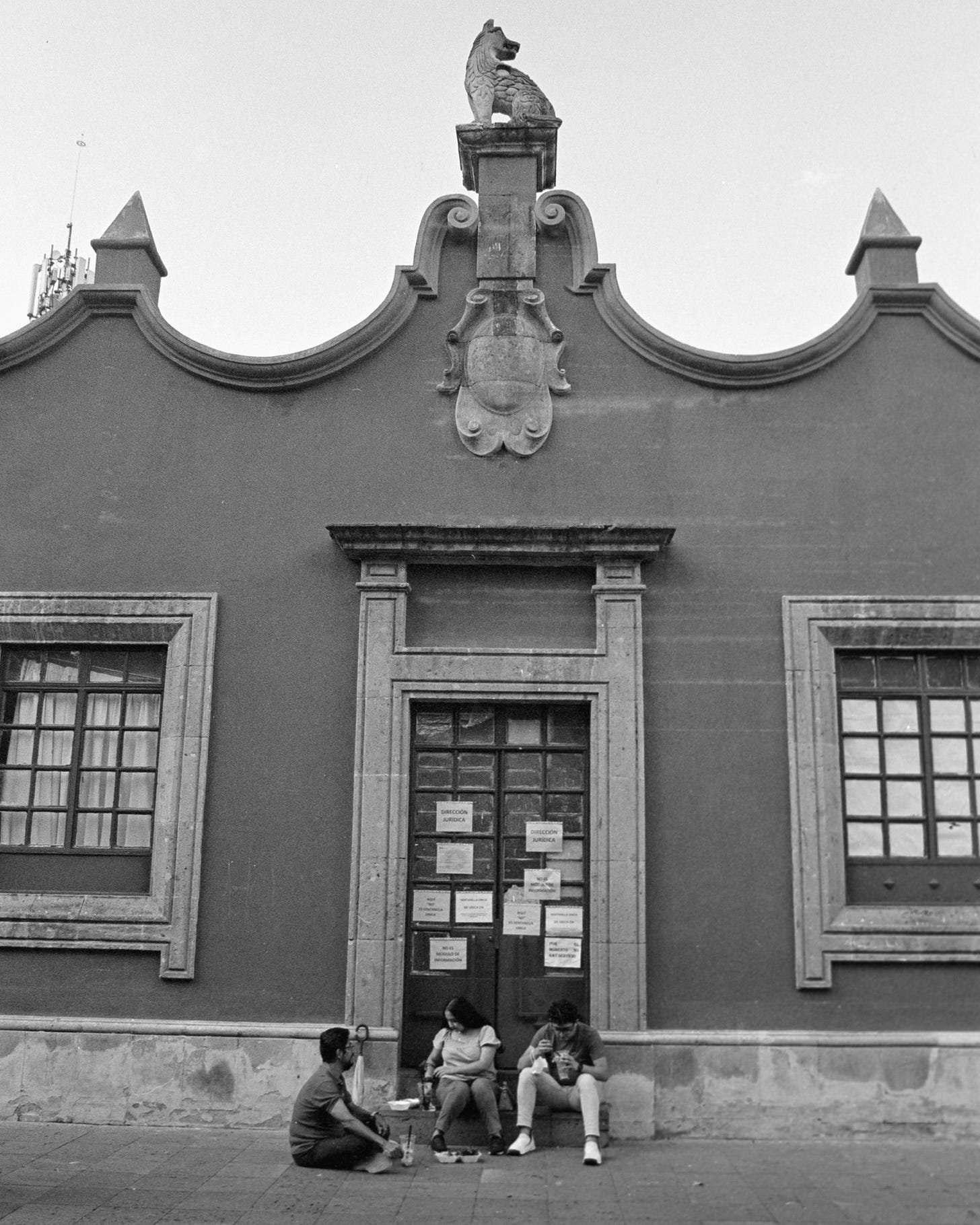This is the second installment in a series addressing the controversy around remote-worker gentrification in Mexico City - and how it is actually a global phenomenon.
In Part 1: Are Gringos Ruining Mexico City? I explain the problems created by the influx of remote workers in the Mexican capital and my personal relationship with the issue.
This week’s article will attempt to suggest solutions to these issues. Although I am a legal resident of Mexico, I am not a citizen and can’t vote on local policy.
Therefore, I will direct my proposed solutions toward fellow foreigners before finishing with questions for my Mexican neighbors to continue the conversation.
If you find this article helpful, please forward it to anyone who might need to read it.
Globalization & Gentrification: What Can Be Done?
Remote work is here to stay. The shift to remote work is one of the most significant developments in the story of globalization. Work is now decoupled from physical company headquarters and “home office” can be anywhere.
The issue in Mexico City is not just about local gentrification so much as how the globalization of the workforce will make this phenomenon common around the world.
These overpowering economic forces will continue to lure highly-skilled remote workers to less-expensive destinations until we build a global framework to regulate and capture the value created by transnational corporations and their employees.
Despite these challenges, most governments will compete to attract workers with incentives, which we’ve already seen in places like Bali, Barbados, Portugal, Mauritius, Estonia, and many more.
In the interim, Mexico City's numerous remote-work advantages will guarantee it will be a popular destination for digital nomads, travelers, and ex-pats alike.
While much of the talk on Mexican social media has focused on repelling these “invaders”, I believe it is more productive to focus on what actions individual visitors can take to ensure their stay in Mexico helps rather than hurts the local community.
After talking to a few local friends, here’s a list of tips you can follow to tread more lightly as a guest in this wonderful city.
Don’t Call it Cheap
The core of the controversy is a crisis of affordability. While many foreigners find prices lower than back home, most Mexicans are watching costs rise to unreachable heights. The widening gap between the locals struggling to make ends meet on an average salary of $425/mo and foreigners exclaiming “Mexico is so cheap!” is causing resentment.
“Mexico is so cheap” has become a catchphrase on social media for the callousness of foreigners who are unaware of how their visits are contributing to soaring rents and rising prices. Don’t make yourself into a meme.
Mexico isn’t cheap. It’s struggling with structural inequality and persistent poverty, beset with many long-standing problems of classism and racism that tend to benefit the whiter and wealthier new arrivals at the expense of locals.
Be wise with your words and don’t expect locals to agree with how cheap their hometown is.
Wear a Mask
The United States has largely ended pandemic precautions, but Mexico has not. The law states that everyone must wear masks inside closed spaces. But most foreigners prefer to go maskless inside stores and Ubers, making it look like they think they’re above the law.
I get it - it’s annoying and might feel pointless if your hometown has moved into a later stage of the pandemic. But keep in mind the following historical context: one of the main reasons this country was so quickly conquered by a small band of Spaniards was the invisible pandemic they brought with them. Perhaps locals are a bit more cautious as a result.
Regardless, this country has taken a very different route than most during the current pandemic. The government imposed virtually no restrictions on foreign visitors while placing the burden almost entirely on the service industry.
This has given Mexico the appearance of an alternative reality where COVID doesn’t exist, while foreigners leave massive outbreaks in their wake (i.e. Art With Me Tulum).
Health concerns aside, the optics just look bad. Respect locals and wear a mask inside all closed spaces.
Chose Accommodation Wisely
The main issue is the concentration of visitors in just three neighborhoods - Roma, Condesa, and Juárez. The charm of these neighborhoods will inevitably attract plenty of visitors, but they are at risk of becoming victims of their own popularity.
Nobody wants to see these cherished neighborhoods turn into San Miguel de Allende or Venice, Italy - shells of former communities largely absent of locals and fully catering to foreigners.
Of course, if you come here you will inevitably visit these neighborhoods. But the sheer number of AirBNBs popping up in these three areas risks pushing out the local community. Instead, chose one of the many boutique hotels like these:
Condesa: Casa Mannach, Casa Decu, or Condesa DF
Roma: Nima Local House, Ignacia Guesthouse, or La Valise
Juárez / Cuauhtémoc: Hotel Carlota or Hotel Geneve
Downtown: Hotel Downtown, Círculo Mexicano, Histórico Central, or Gran Hotel Ciudad de Mexico
Polanco: The Wild Oscar, Hotel Habita, or The Alest Hotel
And if you do use Airbnb, chose a less-saturated neighborhood like San Miguel de Chapultepec, Anzures, Nápoles, Escandón, Cuauhtémoc, San Rafael, or Santa Maria la Ribera.
Spread the Wealth
Most visitors have a practically identical foodie bucket list of four or five restaurants - Pujol, Rosetta, Maximo Bistrot, Contramar and Quintonil.
Their chefs have already leveraged their success to build other restaurants that are probably also on your bucket list (i.e. Lardo, Amaya, Merotoro, and Cafe Nin.)
Here are some alternatives:
Street tacos: don’t worry about getting sick. If there are a lot of people in line, you’re fine. Some stand-outs include the infamous El Visilito in Navarte, El Paisa in San Rafael, or El Huequito in Centro.
Local markets: sample regional favorites at the food stalls in Mercado Merced in downtown, Mercado Medellín in Roma or Mercado San Juan in Juárez.
Cantinas: Old-school places where you get food included with your drink. See recommendations in next section or follow me on TikTok for more reviews coming soon.
Hidden Gems: Skip Pujol and head to Restaurante Nicos, said to be the best restaurant in the city. And don’t sleep on the seafood tacos at Taller Xilotl or the regional focus of Restaurante Mux.
I will be expanding my TikTok reviews to cover a broader swath of the city.
Wander More Widely.
There is so much more than just Roma and Condesa. Add these ideas to your itinerary:
Wander the Centro Histórico and visit the ruins of the Templo Mayor to learn about the Aztec capital of Tenochtitlan that once stood where the Zócalo (main square) now stands. Learn about how the Spanish forced the Aztecs to build the nearby cathedral using the bricks from their sacred temple - then think twice before gushing about how the city looks “so European.” August 13th was the 501st anniversary of the fall of Tenochtitlan - a trauma that is still felt today.
Explore the South. Because Mexico City was originally a lake, some of the oldest neighborhoods were once independent pueblos on the lake’s edge. The most famous is Coyoacán, where the head conquistador Hernán Cortés built his home (currently the city hall). Move beyond Frida Kahlo’s Casa Azul and wander down Av. Francisco Sosa to neighboring San Ángel, which holds a Saturday market called Bazar Sábado and the San Angel Inn, a classy establishment that’s perfect for a lazy lunch. Try the house margarita.
Discover Residential Neighborhoods Don’t know where to start? Experience a local cantina at Salón Los Cuates in Navarte, have a home-style breakfast at Fonda Margarita in Del Valle, vegan tacos in Nápoles, pop into art galleries in San Miguel de Chapultepec, feast on the best birria at La Polar in San Rafael, and finish with a Sunday stroll through the gorgeous Moorish gazebo in Santa Maria la Ribera.
Travel Deeper: Tlalpan has a similar vibe to Coyoacán, but just a fraction of the visitors; Azcapotzalco dates back to pre-hispanic times and is home to the famous cantina El Dux de Venecia; and Clavería produced the original Casa de Toño, a popular local chain known for their excellent pozoles.
Take Day Trips: Ideas include taking a sunrise hot air balloon over the pyramids at Teotihuacán, connecting with nature at Desierto de Los Leones, and exploring a more tranquil side of Xochimilco at Arca Tierra, where you can learn local recipes on a chinampa, the ancient farming system built on the floating islands in the city’s lake.
Brush up on Your Spanish
Speaking to waiters in English and expecting them to understand you is precisely the “neo-colonial” attitude that is pissing off so many locals.
I know this doesn’t apply to everyone. I’m glad to see so many American immigrants studying the language regularly. For those already doing this - I applaud you. And I encourage you to converse with more people than those serving you dinner.
I highly recommend the book Breaking Out of Beginner’s Spanish for language learners of all levels. It’s written by a Mexico-based American journalist and has a major focus on conversational Mexican Spanish.
Tips For Longer-Term Visitors
Get a Visa
Mexico grants many nationalities a 180-day visa-free stay. But most remote workers are effectively living in Mexico by renewing this visa indefinitely, which makes their stay here illegal. And I don’t need to explain the extreme contrast in how the two neighboring nations treat illegal immigration.
If you intend to work remotely, please understand the impact of your actions. If you don’t have a resident visa, you can’t legally rent an apartment. Therefore, you’ll probably rent an Airbnb at a price much higher than the market rate, which is one of the main reasons locals are being priced out of their own neighborhoods.
Getting a visa is relatively easy for remote workers. You just need to show that you have enough monthly income to support yourself and the visa is approved.
This isn’t just the right thing to do, it also opens a lot of doors on a practical level, including allowing you to open a local bank account, which is necessary for many of the transactions you would use Venmo or PayPal for back home.
You can read more about the process here or contact an immigration expert to help facilitate the process. Reply to this email for a personal recommendation.
Immerse Yourself in the Culture
Learn the language. Make local friends. Take salsa lessons. Go to museums to study the history and traditions of this wonderful city. Get an EcoBici account and explore new neighborhoods. In short, embrace all this city has to offer, and don’t be afraid to step away from your fellow foreigners to seek out local experiences with new friends.
Doing your homework is important. At the very least, you should familiarize yourself with the following topics: the founding story of Tenochtitlan, the Spanish conquest of Mexico, the Mexican Revolution, the Liberal Reforms, the US Invasion and loss of 51% of Mexican territory, the dictatorship of Porfirio Díaz and the subsequent Mexican Revolution. Read up on Benito Juarez and pay homage to his tomb.
Visit the Cineteca Nacional to watch films from the Golden Age of Mexican Cinema and learn who Pedro Infante is. Watch the contemporary satires of director Luis Estrada to appreciate dark Mexican humor (El Infierno and La Dictadura Perfecta). Binge the Netflix documentary 1994 to understand how modern Mexico came to be.
Read the classic The Labyrith of Solitude by Octavio Paz, a collection of essays about Mexican culture; the definitive history Conquest: Montezuma, Cortez, and the Fall of Old Mexico by British historian Thomas Hughes; or Bad Mexicans by Kelly Lytle Hernandez, which tells the story of the Mexican exiles in the US who planned the overthrow of dictator Porfirio Díaz.
[Note: I’m going to choice one of these for my next book club pick, so comment your preference below].
Finally, Find a Way to Contribute
Mexican history is replete with two main categories of foreigners who left their mark on the country - those who came with their eyes on making money and returning home rich, and those who fell in love with the culture and shared it with the world.
The former extracted what they wanted and left Mexico poorer as a result. And unfortunately, those of us who are here simply because it's a “cheap” place to work are inadvertently falling into this category of taking out more than they put back in.
The other category is full of immigrants who left Mexico a richer place than they found it. Some of the most cherished aspects of Mexican culture are the contributions of immigrants - such as your al pastor taco and the cerveza you wash it down with.
This country has a long history of foreigners falling in love with Mexico and sharing that love with the world. This includes the late Diana Kennedy’s celebration of Mexican cuisine, photographer Mariana Yampolsky’s loving portraits of rural Mexico, and Robert Brady’s championing of Mexican artists abroad.
I’m not implying you have to become a famous artist to leave a positive mark on this country. But by taking an interest in the culture, living with humility, and searching for ways to contribute, we can all try to leave this city a little better than we found it.
Each of us who has the privilege of immigrating here can choose which category to join. And I hope this letter inspires you to join the latter.
Lastly, Questions for Chilangos
How can foreigners take part in the community?
Many foreigners hold back from interacting with the local community not out of lack of interest, but because they don’t know where to start.
There are plenty of public events happening every day in the city - from salsa classes in the parks to language exchanges in coffee shops. But many newcomers don’t know where to find them.
Please comment below to share your tips on how foreigners can build more meaningful relationships with the local community.
What responsibility do locals hold?
One thing notably absent from the conversation is the role of the local government in regulating these issues.
Other cities affected by over-tourism have enacted strict regulations around AirBNBs, such as Paris, Barcelona, Amsterdam and Los Angeles.
Putting a cap on the number of days a property can be rented on AirBNB seems to be the most direct way to start bringing this wave of tourism under control.
Limiting visitor stays to 180 days per year while facilitating foreigners to register as temporary residents can bring more people into the system.
But until the government steps up to regulate these issues, chilangos will be at the mercy of the powerful market forces pushing remote workers from unaffordable major U.S. cites to places like Mexico City - at the expense of locals.
How do we create space for productive dialogue?
Let’s find a way to communicate with mutual respect. Labeling all foreigners as “colonizers” completely shuts down any meaningful dialogue towards solutions.
It’s also reflective of the outdated language framing this controversy. This isn’t about one nation colonizing another - it’s about the breakdown of the nation-state and the failure of existing political structures to meet the challenges of this era.
Much of the damage caused by foreigners comes less from deliberate malice so much as the unawareness of how individual actions are affecting the community at large.
The more we can channel this conversation towards solutions, the closer we come to making this phenomenon mutually beneficial for locals and visitors alike.
What else do foreigners need to know?
Is there a disconnect that I haven’t addressed in this article? If so, please let me know in the comment section below.
If you enjoyed this article please forward it to a friend or consider upgrading to a paid subscription to support my work.
Thank you for reading,
Marko







This series has been amazing and timely, my girlfriend and I are moving to CDMX today and we’ve been trying our best to not perpetuate these issues. We both got temporary residency visas, have been studying Spanish for several years now and plan to live somewhere other than the popular places you point out in your article.
I really appreciate this series on CDMX. I lived there in 2019 and 2020 until the pandemic hit, and what you've written both here and in the previous newsletter ring true to my experiences in the city. And thanks for mentioning Cineteca National - I rarely see other foreigners talk about it but it's one of my favorite places. Looking forward to reading more from you - cheers!